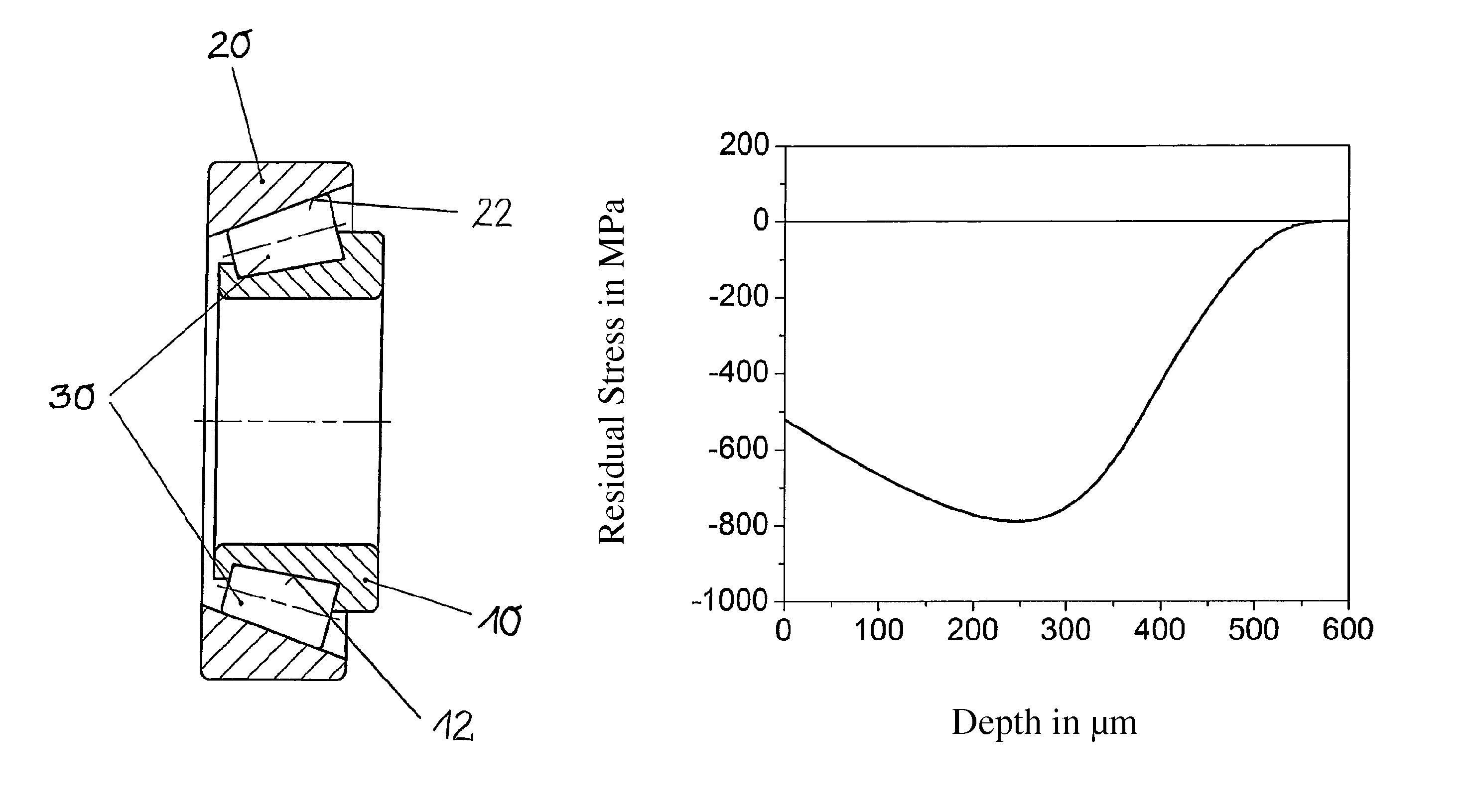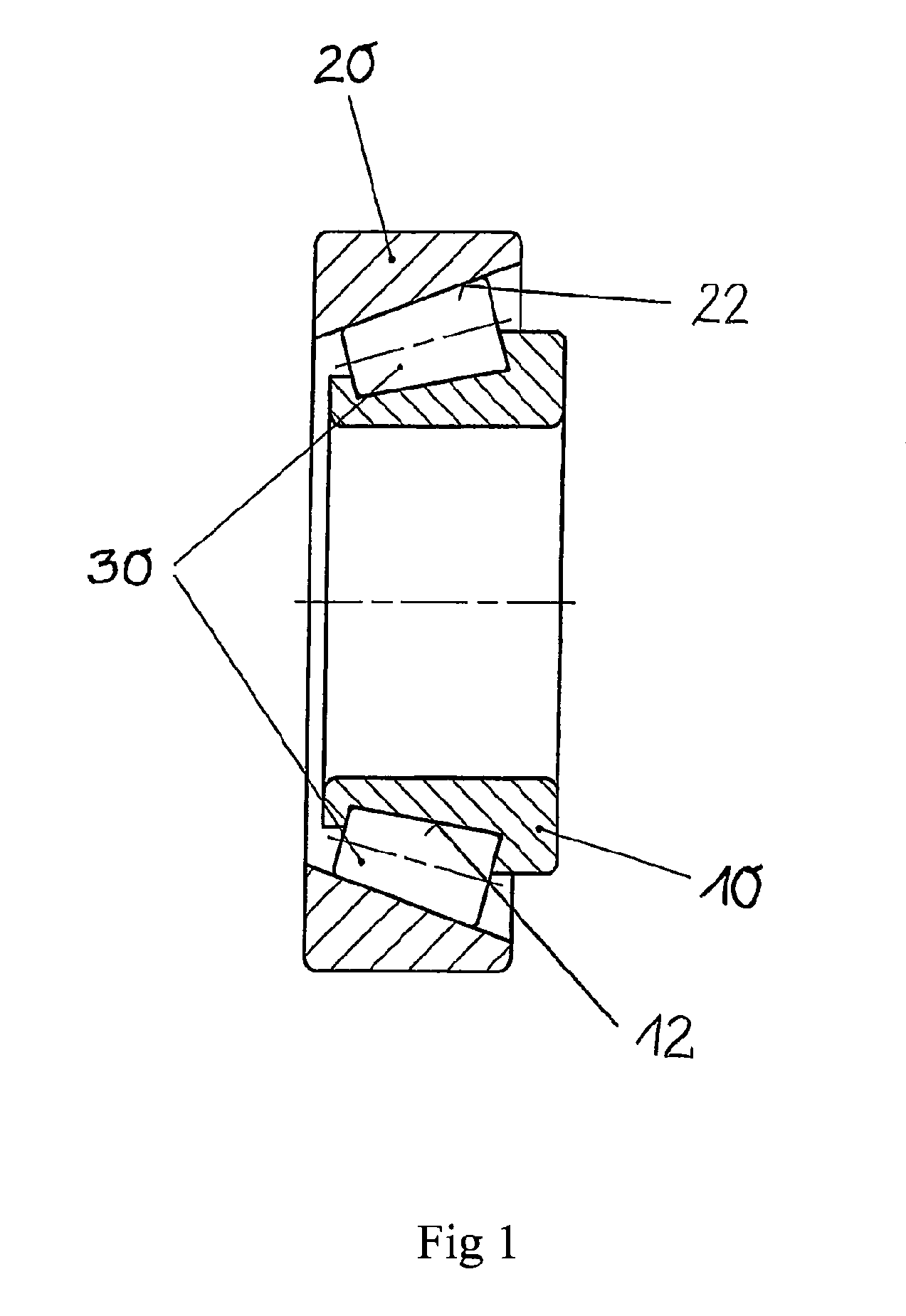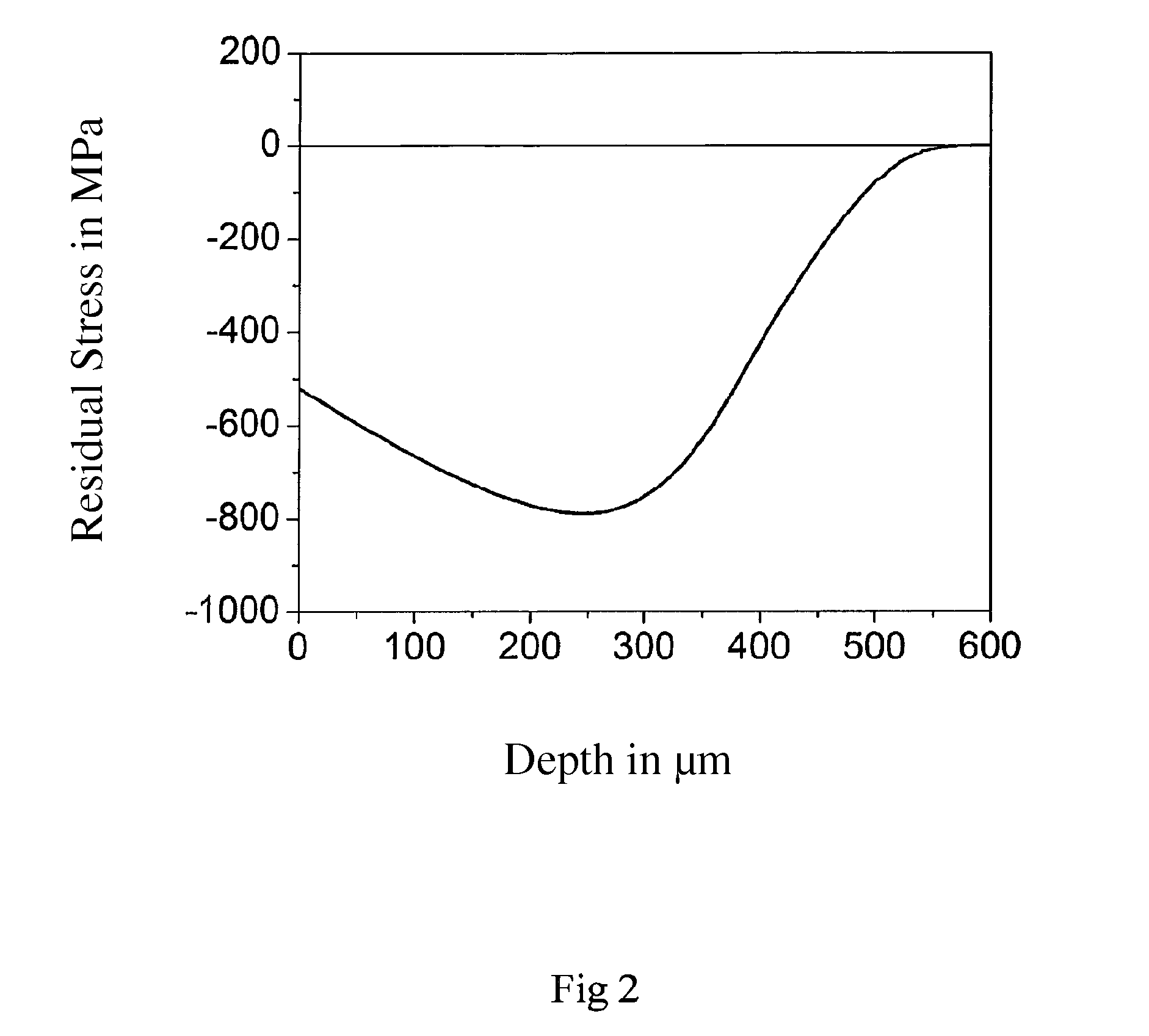Method for producing a track element of a bearing assembly
a technology of track elements and bearing assemblies, which is applied in the direction of manufacturing tools, furnaces, heat treatment devices, etc., can solve the problems of raceway peeling, negative influence on the service life of rolling-element bearings, and failure of rolling-element bearings, and achieve the effect of increasing the service li
- Summary
- Abstract
- Description
- Claims
- Application Information
AI Technical Summary
Benefits of technology
Problems solved by technology
Method used
Image
Examples
Embodiment Construction
[0018]In exemplary embodiments of the invention it is advantageous to more uniformly design the profile of the compressive residual stresses from the surface up to in the region of the compressive residual stress maximum in the depth than is possible using known methods such as shot peening, hard turning, or conventional deep-rolling processes. This is achieved in particular in that after the hardening of the raceway of the raceway element, two deep rolling steps are carried out using different rolling elements. Here for example two ceramic or cemented carbide balls of different diameters are rolled one-after-the-other over the raceway, whereby compressive residual stresses are generated. Depending on the geometry of the rolling elements, the compressive residual stresses preferably build up at different depths. Here the depth profile follows the distribution of the von Mises stress, wherein with repeated rolling-overs a superimposition takes place with the already-generated compres...
PUM
| Property | Measurement | Unit |
|---|---|---|
| Length | aaaaa | aaaaa |
| Length | aaaaa | aaaaa |
| Pressure | aaaaa | aaaaa |
Abstract
Description
Claims
Application Information
 Login to View More
Login to View More - R&D
- Intellectual Property
- Life Sciences
- Materials
- Tech Scout
- Unparalleled Data Quality
- Higher Quality Content
- 60% Fewer Hallucinations
Browse by: Latest US Patents, China's latest patents, Technical Efficacy Thesaurus, Application Domain, Technology Topic, Popular Technical Reports.
© 2025 PatSnap. All rights reserved.Legal|Privacy policy|Modern Slavery Act Transparency Statement|Sitemap|About US| Contact US: help@patsnap.com



